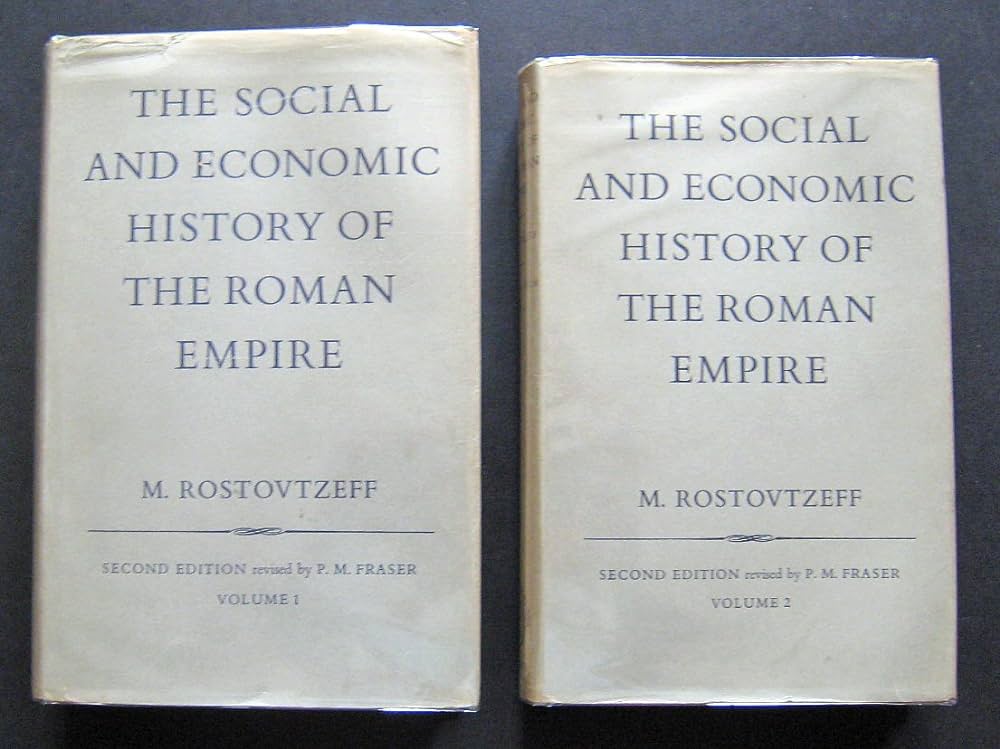The Roman Empire, renowned for its military might and grandeur, also left a lasting legacy in the economic realm. With its vast territories and network of trade routes, the empire established an economic structure that significantly influenced future economies. This article provides an insightful exploration of the economic history of the Roman Empire, shedding light on its key aspects and lasting impact.

Credit: www.biblio.com
Overview of Roman Economic Development
At the height of its power, the Roman Empire boasted an impressive economy that flourished through trade, agriculture, and industrial production. The empire’s economic success was driven by a complex system of trade routes, infrastructure development, and abundant natural resources.
Trade And Commerce
The Romans were skilled traders and established extensive trade networks that spanned from Britain to the Middle East. Their trading activities facilitated the exchange of goods such as foodstuffs, textiles, and metals, which contributed to economic growth and prosperity throughout the empire.
Agriculture
A significant portion of the Roman economy was fueled by agriculture. The fertile lands enabled the production of staple crops like wheat, grapes, and olives, sustaining the empire’s population and supporting trade with other regions.
Industrial Production
The Romans were adept at industrial production, particularly in the areas of mining, metalworking, and pottery. The empire’s skilled artisans and advanced production techniques enabled the mass production of goods, driving economic activity and technological progress.
Key Economic Institutions
The economic framework of the Roman Empire was supported by various institutions and systems that facilitated financial transactions, resource management, and trade regulation.
Coinage And Banking
The Romans developed a sophisticated coinage system that included gold, silver, and bronze coins, which played a crucial role in facilitating trade and commerce. Additionally, the empire had an early form of banking that provided financial services and helped to stabilize the economy.
Public Infrastructure
The construction of roads, bridges, and ports by the Romans not only facilitated military expansion but also significantly enhanced economic activities. The efficient transportation infrastructure promoted trade and commerce, ensuring the flow of goods and resources across the empire.
Trade Regulations
The Roman government implemented trade regulations and tariffs to manage commercial activities and protect local industries. These measures aimed to maintain economic stability and safeguard the interests of Roman merchants and producers.
Legacy and Influence
The economic advancements of the Roman Empire left a profound and enduring impact on subsequent civilizations and economic systems. The empire’s pioneering economic practices and institutions laid the foundation for future economic development and global trade.
Influence On European Economy
Following the decline of the Roman Empire, many of its economic practices and institutions persisted in medieval Europe, influencing the development of markets, trade routes, and financial systems. The legacy of Roman economic principles contributed to the economic resurgence of Europe in the Middle Ages.
Continuation Of Trade Routes
Roman trade routes, such as the Silk Road, remained vital conduits for trade and cultural exchange long after the empire’s fall. The extensive network of trade established by the Romans continued to connect distant regions, facilitating the exchange of goods, ideas, and technologies.
Global Economic Impact
The economic legacy of the Roman Empire transcended Europe, influencing trade and commerce on a global scale. The empire’s economic achievements and legacy set the stage for future economic development, shaping the course of world history and global trade relations.

Credit: www.amazon.com
In Conclusion
The economic history of the Roman Empire stands as a testament to the empire’s ingenuity, resourcefulness, and enduring impact. The economic foundations laid by the Romans have reverberated through centuries, shaping the economic landscape of the ancient world and leaving a lasting imprint on the trajectory of global economics.
Frequently Asked Questions For Economic History Of The Roman Empire
What Was The Economic System Of The Roman Empire?
The economic system of the Roman Empire was primarily based on agriculture, trade, and slave labor, with a complex network of markets and taxation.
How Did The Roman Economy Grow And Prosper?
The Roman economy grew and prospered through conquest, which brought new lands, resources, and slaves into the empire, as well as through trade with other regions.
What Were The Major Industries In The Roman Empire?
The major industries in the Roman Empire included agriculture, mining, manufacturing, and construction. These industries provided food, materials, goods, and infrastructure for the empire.
How Did The Roman Empire Finance Its Operations?
The Roman Empire financed its operations through various means, including taxation, tribute from conquered territories, confiscation of property, and minting of coins.
Guest Author Sakhawat-Shuvo wrote and edited this Article based on his best knowledge and understanding. These opinions and remarks are not endorsed or guaranteed by epichistoria.com or EpicHistoria. The Epic Historia does not guarantee this article’s content. Readers should verify and use their judgment before trusting the content. Also, the Images used in this Article are the copyright of their Respective Owners. Please use our Comment Box or Contact Us form to report this content. This information is not accountable for losses, injuries, or damages.


